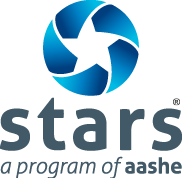| Overall Rating | Silver - expired |
|---|---|
| Overall Score | 56.72 |
| Liaison | Christie-Joy Hartman |
| Submission Date | May 12, 2017 |
| Executive Letter | Download |
James Madison University
OP-22: Water Use
| Status | Score | Responsible Party |
|---|---|---|

|
0.00 / 5.00 |
Abram
Kaufman Energy Conservation and Sustainability Manager Facilities Management Engineering & Sustainability |
"---"
indicates that no data was submitted for this field
Level of ”Physical Risk QUANTITY” for the institution’s main campus as indicated by the World Resources Institute’s Aqueduct Water Risk Atlas:
Medium to High
Total water use (potable and non-potable combined):
| Performance Year | Baseline Year | |
| Total water use | --- | 142,762,950 Gallons |
Potable water use:
| Performance Year | Baseline Year | |
| Potable water use | 210,123,100 Gallons | 142,762,950 Gallons |
Start and end dates of the performance year and baseline year (or three-year periods):
| Start Date | End Date | |
| Performance Year | July 1, 2015 | June 30, 2016 |
| Baseline Year | July 1, 2008 | June 30, 2009 |
A brief description of when and why the water use baseline was adopted:
---
Figures needed to determine "Weighted Campus Users":
| Performance Year | Baseline Year | |
| Number of students resident on-site | 6,289 | 5,796 |
| Number of employees resident on-site | 8 | 2 |
| Number of other individuals resident on-site and/or staffed hospital beds | 0 | 0 |
| Total full-time equivalent student enrollment | 20,877 | 18,287 |
| Full-time equivalent of employees (staff + faculty) | 3,177 | 2,925 |
| Full-time equivalent of students enrolled exclusively in distance education | 342 | 0 |
| Weighted campus users | 19,358.25 | 17,358.50 |
Potable water use per weighted campus user:
| Performance Year | Baseline Year | |
| Potable water use per weighted campus user | 10,854.45 Gallons | 8,224.38 Gallons |
Percentage reduction in potable water use per weighted campus user from baseline:
0
Gross floor area of building space:
| Performance Year | Baseline Year | |
| Gross floor area | 6,761,579 Gross square feet | 5,309,728 Gross square feet |
Potable water use per unit of floor area:
| Performance Year | Baseline Year | |
| Potable water use per unit of floor area | 31.08 Gallons per square foot | 26.89 Gallons per square foot |
Percentage reduction in potable water use per unit of floor area from baseline:
0
Does the institution wish to pursue Part 3 of this credit? (reductions in total water use per acre/hectare of vegetated grounds):
No
Area of vegetated grounds:
| Performance Year | Baseline Year | |
| Vegetated grounds | --- | --- |
Total water use (potable + non-potable) per unit of vegetated grounds:
| Performance Year | Baseline Year | |
| Total water use per unit of vegetated grounds | --- | --- |
Percentage reduction in total water use per unit of vegetated grounds from baseline:
---
A brief description of the institution's water-related behavior change initiatives, e.g. initiatives to shift individual attitudes and practices such as signage and competitions:
---
A brief description of the institution's water recovery and reuse initiatives:
To reduce potable water consumption, new and innovative methods of harvesting and reusing water have been identified and piloted on campus in the past few years. One major source of harvested water is Newman Lake on campus. Under the lake is an extensive pump system allowing an estimated 4 million gallons of water to be harvested every year to irrigate the surrounding landscape. One way water is recycled on campus is through the capture of water used during required weekly fire pump tests, reducing potable water consumption by an estimated 50,000 gallons.
A brief description of the institution's initiatives to replace plumbing fixtures, fittings, appliances, equipment, and systems with water-efficient alternatives (e.g. building retrofits):
JMU’s Policy 1701 requires that “the most water efficient appliances available must be purchased. This includes, but is not limited to, high performance fixtures such as toilets, low-flow faucets and aerators, and upgraded irrigation systems. When possible, those with the EPA WaterSense label will be selected.” One particular project with Residence Life saw over 1,600 aerators replaced with low-flow aerators which reduced potable water consumption by an estimated 1.6 million gallons per year.
The website URL where information about the programs or initiatives is available:
---
Additional documentation to support the submission:
---
Data source(s) and notes about the submission:
Gross floor area of building space entered for this credit is based on data provided from the water budget and is based on utility data. In 2008-2009, JMU did not track the number of students enrolled exclusively in distance education. Thus, zero was entered; however, it is likely there were students who were enrolled online.
The information presented here is self-reported. While AASHE staff review portions of all STARS reports and institutions are welcome to seek additional forms of review, the data in STARS reports are not verified by AASHE. If you believe any of this information is erroneous or inconsistent with credit criteria, please review the process for inquiring about the information reported by an institution or simply email your inquiry to stars@aashe.org.
